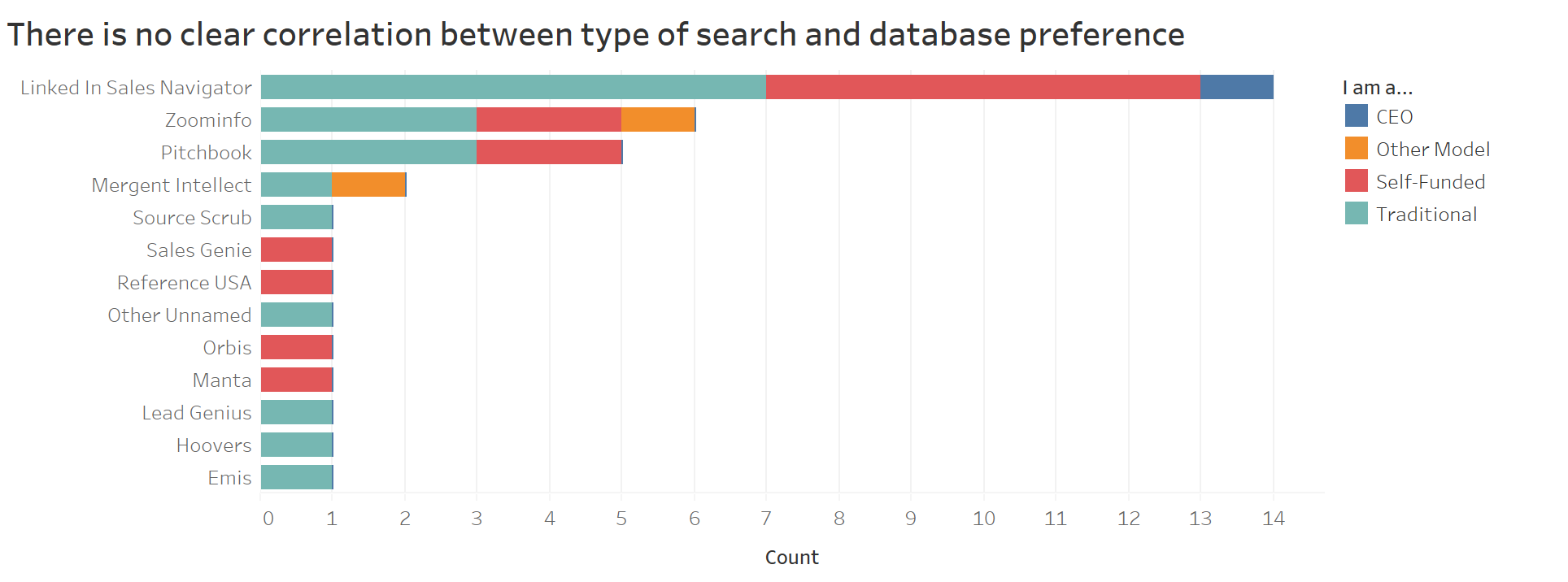SURVEY: Search Databases

October 14, 2019
by an intermediary from The University of North Carolina at Chapel Hill - Kenan-Flagler Business School in Nashville, TN, USA
Thank you to the 23 respondents who replied to the Search Database survey!
Executive Summary: LinkedIn Sales Navigator is the most popular database. Database preferences vary among types of searchers, in other words, traditional searchers do not appear to have different preferences than self-funded searchers. 64% of respondents agree that the databases they use are aiding their search. Only 27% of respondents have put a business under LOI that they found on a database.
Respondents. Only one CEO responded to the survey. The rest were equally split between traditional and self-funded searchers.

The CEO respondent agree that databases were helpful - but his or her acquisition was not found on a database.
Databases Used. LinkedIn Sales Navigator was the most popular database by far. 61% of respondents used Sales Navigator. Keep in mind that some respondents used multiple databases.

Traditional and self-funded searchers did not have different preferences for databases. Here is the same histogram color-coded by type of searcher.

"The database I used is aiding me in my search." Databases - everyone is doing it, but does it help? Most searchers seem to think so!

The belief that databases are aiding their search does not appear to vary much across databases, but searchers may be more satisfied with ZoomInfo than LinkedIn Sales Navigator. We have to keep in mind that a sample size of 23 is small.

Now here's the huge but: most searchers who responded have not put a business they found from a database under LOI.

None of the databases searchers are using appear to be delivering better results than any other database. Here is the database histogram again but broken down by if that database has yielded an LOI.

Other factors to keep in mind. LOIs and acquisitions are not the only measurement of if a database is useful or not. Many of the leads may only be the first step in a proprietary outreach process. Furthermore, only one CEO responded. Many of the searchers who responded may find an acquisition later and there was no measurement of how long any respondent had been searching for.
in Boston, MA, USA
from The University of North Carolina at Chapel Hill in Nashville, TN, USA